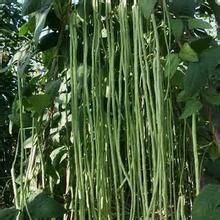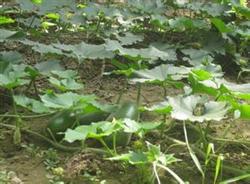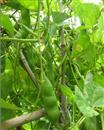Planting beans to prevent "three insects"

The peak period of bean growth is when the temperature is high and Rain Water is more, the occurrence of insect pests is serious, if the management can not keep up, it is very easy to reduce the quality and yield. In terms of control measures, agricultural control should be given priority to, with equal emphasis on physical and chemical control. 1. Pod borer, Chilo suppressalis is the larval damage period from June to October every year. The adults have phototaxis, and the eggs are scattered on the tender horns, flowers and petioles, and the newly hatched larvae eat into the tender horns or flowers to feed, resulting in the shedding of flowers and horns, and the older larvae eat into the beans, and the injured beans often rot after rain. The larvae have the habit of going out during the day and backlighting, hiding in flower organs, beans or rolled leaves during the day, excreting insect feces to block the wormhole, and generally begin to climb out of the wormhole in the evening except on rainy days and sporadic activities during the daytime. Stop going out the next morning. Prevention and control measures: 1. Remove the fallen flowers in the field and remove the damaged rolled leaves and beans to reduce the source of insects. two。 Set up a black light and make use of the phototaxis of adults to trap and kill. 3. Choose 5% fipronil 2000 times liquid, 40% fenvalerate 6000 times solution, 2.5% deltamethrin 3000 times solution and spray once every 10 days. Second, the leaf miner does harm by the larvae sneaking into the leaves, eating the mesophyll and leaving only the upper and lower epidermis, forming a zigzag tunnel and affecting the growth of the plant. Leaf miner mainly harms peas, beans, cowpeas, kale, cauliflower, cabbage, rape, radish, lettuce, tomato, eggplant, potatoes and so on. Prevention and control measures: 1. The armyworm board was used to trap and kill adults. two。 Adults mainly lay eggs on the back of the leaves, and the spraying solution should focus on the back of the leaves. At the beginning of the damage to the larvae, insecticides with both internal absorption and contact effects, such as 48% Lesbon EC 800 / 1000 times, were sprayed for 2 times in a row. Third, the red spider on the red spider bean horn is also called bean leaf mite. The peak period is from August to September, when adult and nymph mites feed on tender leaves, and the leaves are easy to shrink after being killed. At the initial stage of occurrence, the leaf surface turns red after chlorosis, and the fine wire mesh on the back of the leaf can directly see the scope and area of the occurrence. Immediately after the occurrence, use a sprayer to spray a pesticide enclosure, its range should be slightly larger than the occurrence range, and then thoroughly spray the plants in the enclosure to prevent the spread of red spiders. Prevention and control measures: 1. Pay attention to pest monitoring, found that there are a small amount of damage, should timely remove insect leaves and burn, in case of dry weather, we should pay attention to timely irrigation and fertilization to promote plant growth and inhibit the proliferation of spider mites. two。 Selective acaricides were used for general treatment before podding stage and after pod harvest, with emphasis on uniform spraying on the back of the leaves. Spray 20% compound Liuyangmycin EC 1000 times, 1.8% avermectin EC 1500-2000 times, 15% dactylol EC 3000 times, 20% mite EC 2000 times, etc., pay attention to the rotational use of drugs, and promote the use of high-efficiency and low-toxic biological pesticides.
- Prev

Cultivation techniques of wax gourd climbing in open field in spring
Climbing wax gourd has the advantages of saving frame material, reducing the labor of erection and binding vine, lower cost, convenient intercropping and interplanting, extensive cultivation management and so on. When cultivated in open field in spring in the early spring low temperature season, planting Chinese cabbage, small water radish, chrysanthemum and other vegetables in the climbing vine border can improve the land utilization rate and increase the vegetable yield. We have a large number of farmers.
- Next

Sowing methods and cultivation techniques of soybeans
The varieties of early, middle and late maturity were selected with excellent seeds and high yield. The main varieties are purple oil bean, ground oil bean king, big horseshoe oil bean, peanut oil bean, August green, precocious oil bean, late oil bean and so on. 1. Sowing method (1) Seedling raising: greenhouse nutrient bowl should be used to raise seedlings in greenhouse in early spring.
Related
- Where is it suitable to grow horseradish in China? it is expected to see the middle altitude horseradish in Alishan.
- How to prevent tomato virus disease reasonably? (Control methods included)
- Many people like to plant towel gourd on the balcony. What are the main points of this method and management?
- What crops can chili peppers be mixed with?
- Fertilization techniques and matters needing attention in Tomato
- What are the grafting techniques for peach seedlings in spring?
- Harm and control methods of root swelling disease of Chinese cabbage
- What are the pests of sweet potatoes? How to prevent and cure it?
- Symptoms, causes and Control methods of navel Rot in Tomato
- The cause of "Cucumber rotten bibcock" in Farmers' planting Cucumber and its Control Plan

